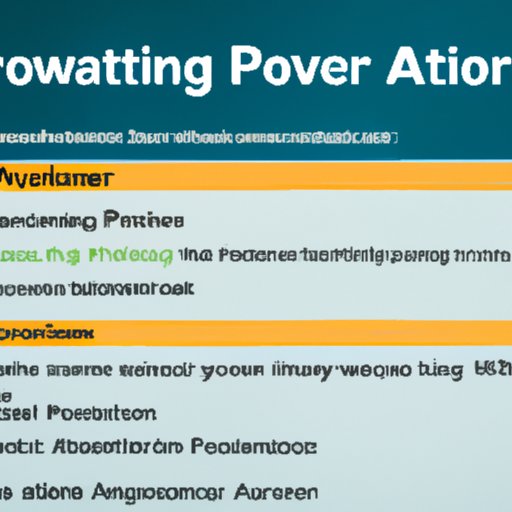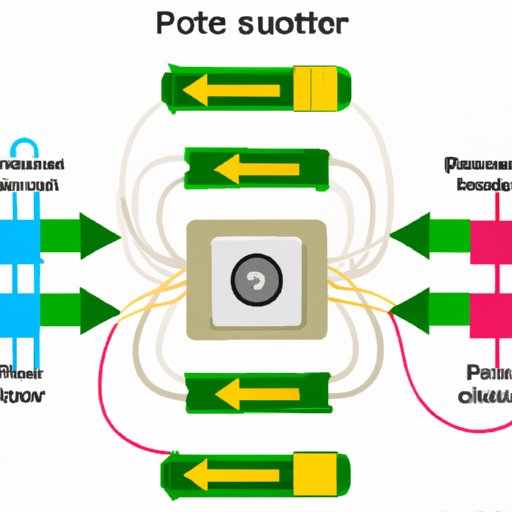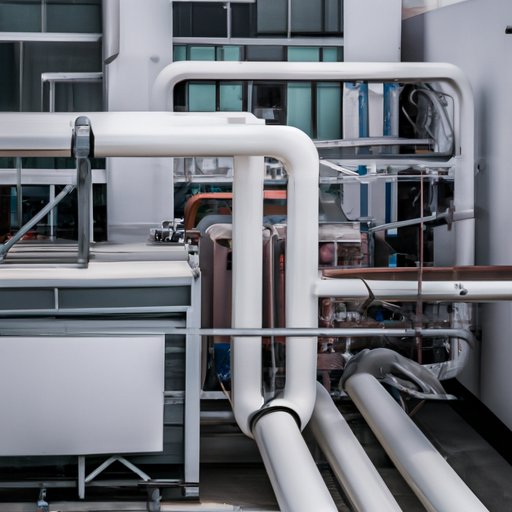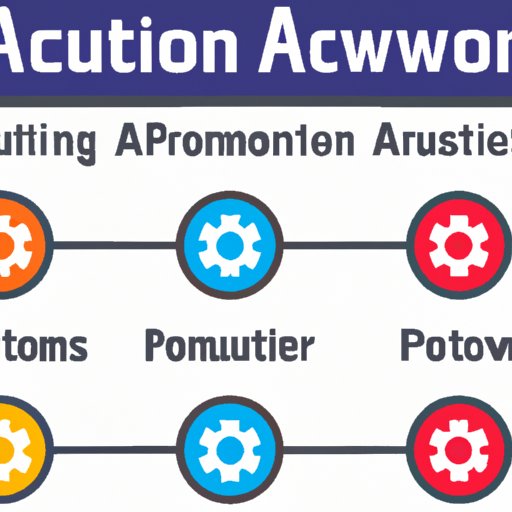Introduction
Power Automate (formerly Microsoft Flow) is a cloud-based workflow automation platform that enables users to design and create automated workflows between different applications and services without writing code. It allows users to quickly set up flows that can automate processes such as creating documents, sending emails, and connecting systems. With Power Automate, users can streamline their daily tasks and save time by automating repetitive processes.
The benefits of creating automated flows in Power Automate are numerous. Automated flows allow users to do more in less time, eliminating manual tasks and freeing up resources for other activities. Additionally, automated flows can reduce errors and increase accuracy, as well as provide visibility into what is happening in a process. Furthermore, automated flows can help users stay organized and keep track of tasks easily.
Step-by-Step Guide to Creating Automated Flows in Power Automate
Creating automated flows in Power Automate is relatively straightforward. The following steps will walk you through setting up a flow and building complex flows with Power Automate.
Setting up the Flow
The first step in creating an automated flow in Power Automate is to set up the flow. This involves selecting a trigger event, which is the action that initiates the flow, and then configuring the flow’s settings. After the flow is set up, the next step is to add conditions and triggers.
Using Conditions and Triggers
Conditions and triggers are used to control when a flow is triggered and when it should execute certain actions. Conditions are used to specify criteria that must be met before an action is taken, while triggers are used to initiate a flow when a predetermined event occurs. When configuring conditions and triggers, it is important to ensure that they are configured correctly so that the flow behaves as expected.
Connectors Overview
Connectors are used to connect Power Automate to other applications and services. Connectors allow users to access data from external sources and use it in their flows. When selecting connectors, it is important to consider the type of data that will be accessed, as well as the security requirements of the application or service being connected to.
Exploring Available Actions
Actions are the building blocks of automated flows in Power Automate. They define what the flow should do when it is triggered. There are many different types of actions available, such as creating documents, sending emails, and connecting systems. Exploring the available actions and understanding how they work is essential for building powerful automated flows.
Building Complex Flows
Once all the necessary components have been configured, the next step is to build complex flows. This involves combining multiple actions and configuring advanced settings to create powerful automated workflows. It is important to test the flow to ensure that it behaves as expected before making it live.

How to Utilize Conditions and Triggers in Power Automate to Create Flows
Conditions and triggers are used to control when a flow is triggered and when it should execute certain actions. Understanding how conditions and triggers work is essential for creating powerful automated flows in Power Automate.
Understanding Conditions
Conditions are used to specify criteria that must be met before an action is taken. For example, if a flow needs to be triggered only when a certain condition is met, such as when a specific value is entered into a field, then a condition can be used to check for this value before the flow is triggered. Conditions can also be used to check for multiple values and take different actions depending on the result.
Creating Triggers
Triggers are used to initiate a flow when a predetermined event occurs. When creating a trigger, it is important to consider the type of event that should trigger the flow, as well as any conditions that need to be met before the flow is triggered. Examples of triggers include receiving an email, entering data into a form, and creating a document.

Mastering Connectors in Power Automate to Create Flows
Connectors are used to connect Power Automate to other applications and services. Mastering connectors is essential for creating powerful automated flows in Power Automate.
Selecting Connectors
When selecting connectors, it is important to consider the type of data that will be accessed, as well as the security requirements of the application or service being connected to. Additionally, it is important to make sure that the connector is compatible with the version of Power Automate being used. Once the appropriate connector has been selected, it can be configured to access the data needed for the flow.
Configuring Connectors
Once the appropriate connector has been selected, it can be configured to access the data needed for the flow. This involves specifying the credentials needed to access the data, as well as any parameters that need to be set. It is important to ensure that the connector is configured correctly to ensure that the flow works as expected.
Exploring the Different Types of Actions Available for Power Automate Flows
Actions are the building blocks of automated flows in Power Automate. Understanding the different types of actions available is essential for creating powerful automated flows.
Overview of Actions
Actions define what the flow should do when it is triggered. There are many different types of actions available, such as creating documents, sending emails, and connecting systems. Each action has a specific purpose and can be used to automate various tasks.
Commonly Used Actions
Some of the most commonly used actions in Power Automate are creating documents, sending emails, and connecting systems. These actions can be used to automate common tasks such as creating documents, sending emails, and connecting systems. Additionally, there are many other actions available that can be used to automate more complex tasks.

Building Complex Flows with Power Automate
Once all the necessary components have been configured, the next step is to build complex flows. This involves combining multiple actions and configuring advanced settings to create powerful automated workflows.
Combining Multiple Actions
The first step in building complex flows with Power Automate is to combine multiple actions. This involves adding multiple actions to the flow and configuring them to work together. For example, a flow may involve creating a document, sending an email, and updating a database. In this case, all three actions would need to be added to the flow and configured to work together.
Advanced Configurations
Once the actions have been combined, the next step is to configure the advanced settings. This involves setting parameters, configuring conditions, and adding logic to the flow. Advanced configurations can help ensure that the flow behaves as expected and performs the desired task.
Tips and Best Practices for Creating Powerful Automated Flows in Power Automate
Creating powerful automated flows in Power Automate requires careful planning and consideration. The following tips and best practices can help ensure that the flow behaves as expected.
Testing Flows
It is important to test the flow to ensure that it behaves as expected before making it live. Testing the flow can help identify any potential issues that may arise when the flow is running. Additionally, testing the flow can help identify any areas where the flow can be improved.
Debugging Flows
Debugging the flow is another important step in ensuring that the flow behaves as expected. This involves checking the logs to identify any errors or warnings that may have occurred. Additionally, debugging the flow can help identify any areas where the flow can be optimized.
Security Considerations
When creating automated flows in Power Automate, it is important to consider security. Security considerations include ensuring that the data being accessed is secure and that the flow is not vulnerable to malicious attacks. Additionally, it is important to make sure that the flow is configured correctly to ensure that it behaves as expected.
Conclusion
Creating automated flows in Power Automate is a great way to streamline daily tasks and save time by automating repetitive processes. By following the steps outlined in this article, users can quickly set up flows and build complex flows with Power Automate. Additionally, by understanding the different types of actions available, mastering connectors, and utilizing conditions and triggers, users can create powerful automated flows with Power Automate. Finally, by following the tips and best practices outlined in this article, users can ensure that their flows are secure and behave as expected.
(Note: Is this article not meeting your expectations? Do you have knowledge or insights to share? Unlock new opportunities and expand your reach by joining our authors team. Click Registration to join us and share your expertise with our readers.)
